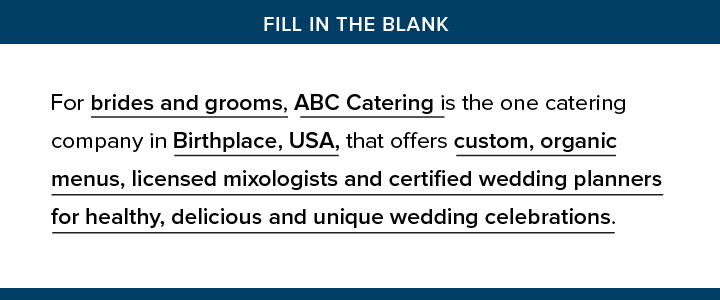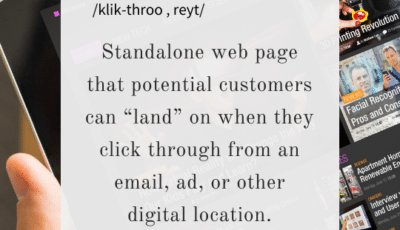7 Steps to a Catering Marketing Campaign

When it comes to creating a marketing campaign, we’ve seen all kinds of ideas: the overlooked, the underdeveloped, the under-resourced, the overused, and probably the most typical, the put-off-until-the-last-minute.
Marketing is one of the most important components of a company’s success, yet we often see these problems and more.
You know why?
Because many are lacking very foundational information that might seem like child’s play to an owner but is not common knowledge to other staff, let alone consumers!
We’ve been hitting some high-level topics lately, so this article is going to take us back to the basics.
While it might seem long, don’t just start skimming, because it’s jam-packed with foundational marketing information.
What to Expect
We’re caterers, and we are busy! We don’t have the time to work on the foundation. Plus, as caterers, we’re experts in great food and great service, but marketing often falls outside our areas of expertise (and interest levels).
Let’s get you back on the marketing horse, though, eh?
Here’s what we’ll be covering:
Table of Contents
Laying the Foundation
Warning: we’re about to get a little marketing-wild, and it all starts at the very beginning, which involves understanding yourself, your competitors and your market. Then, you need to put all three together to find out where you can—and want to be—the most successful.
1) Do Your Market Research
Solidify your background with a SWOT and competitive analysis.
- SWOT: Strengths and Weaknesses (internal) and Opportunities and Threats (external) for your company that all have the potential to affect your business.
- Competitive Analysis: After analyzing yourself, it’s time to analyze your competitors. You can do this through competitive SWOT analyses or with simple competitive research or secret shopping. You conduct this research so you will know what you do or can do better or worse than your competitors.
2) Clarify Your Target Market
It’s essential that you define and understand your target market before you can create a successful campaign. When you define your target market, it is helpful to speak with your sales people, event and delivery staff and anyone who frequently interacts with your customers, because they have had the most experience with them and can give you accurate feedback.
- Primary Target Market: Think about your top clients—the clients with whom you do the most business. Pick apart those clients into the following:
- Demographics: Age, gender, race, career and job title, education level, marital status, family situation and income
- Psychographics: Interests, activities, opinions, personality, values, attitudes and lifestyles
- Secondary Target Market: Now think about your second or even third target market. Who else do you do a lot of business with (or seek to) and what are their demographics and psychographics?
3) Identify Features, Benefits and Positioning
These are often called differentiators, as in things your company does (cooking techniques, highly trained staff, 24/7 catering services, all-natural ingredients, etc.) that your competition doesn’t do (or doesn’t do as well as you).
- Create a List: Ask yourself, “What does my company do or have that my competition doesn’t?”
Then, once you have that list, you’re ready to create a position for yourself in the market!

Starting the Campaign
Now that we’ve solidified the very foundation of your catering company, it’s time to get a little bit more granular and focus on a specific way to help you maintain that overall positioning (and strengthen it).
4) Set Campaign Theme and Objectives
These two should happen simultaneously, as one will really drive the other.
- Campaign Theme: What will your theme be? It should offer a message to your target audience(s) that describes your position in the market. The message and campaign theme should be succinct, clear, and relate to your positioning statement.
- SMART Goals/Objectives: We’ve all heard this before: Specific, Measurable, Attainable, Realistic and Timely. In other words, your marketing objectives should give exact desired goals that detail which segments of your catering business you’d like to grow and within which target market.
For example, Tasty Catering often conducts a separate picnic campaign with the overall goal of increasing picnic sales and getting on more picnic venue preferred/exclusive lists from the year before.
5) Strategize
Strategy is a key component of your campaign, and it’s all about the marketing mix, or the “Four Ps.”
- Product: In a caterer’s case, the product is both a product and a service. The product could include your menu items, equipment rentals, décor, event staff service, bartending services, delivery service and more.
- Price: How much do your products cost? Are you value-based, a top-tier or somewhere in between? Do you offer matrix pricing?
- Place: Place, in this case, refers to distribution. Where do you offer your products? What areas do you serve? How can clients order your catering (e.g., phone ordering, online ordering, email ordering, fax ordering)?
- Promotion: This is where you will discuss your product promotion or advertising. How will you advertise your products? Where can potential customers learn about your company? What is your campaign theme?
6) Execute
The marketing execution part of your plan will detail which specific promotions you will incorporate into your marketing campaign. Here is where you will disclose your marketing campaign theme to the public, over and over, with a consistent message across all mediums so you can increase the chances that your audience will 1) remember your message and 2) associate your message and campaign with your catering company.
- Marketing Tactic(s) and Cost: Marketing tactics will execute your marketing message(s) to your target market. When choosing your marketing tactics*, you should make sure that the tactic will maximize exposure to your target market while minimizing wasted marketing reach (non-target market consumers). Simultaneously, you should weigh the expense of each tactic with the reach so you can decide whether or not each tactic is worth the investment.
- Marketing Budget: For any company, caterer or no, the general rule of (marketing) thumb is that the year-long marketing budget should equal five percent of a company’s annual sales. For example, if you do $1 mil in sales every year, then you should budget $50,000 for marketing. If you’re projecting an increase in sales for the year (say, $1.5 mil), then your budget should adjust accordingly.
*Your marketing tactics could include blogs, email blasts, newsletters, billboards, commercials, direct mail, social media marketing and so much more.
7) Evaluate
Though this happens after your campaign, this step is non-negotiable, people! You must evaluate the level of success of your marketing campaign to see whether you met your objectives or not and why you did or didn’t achieve them. This will help you in future marketing campaigns and tell you where you should continue to spend money on marketing, why you should increase your marketing budget, where you should allocate your marketing budget to get greater ROI, etc.
How do you measure the success of your campaigns, though? Don’t worry, we can help there, too.
Phew! That’s quite the plan. But like most things, if done right, a well-planned, well-executed marketing campaign can lead to a tremendous boom in business. A tremendous boom that we caterers truly deserve!



